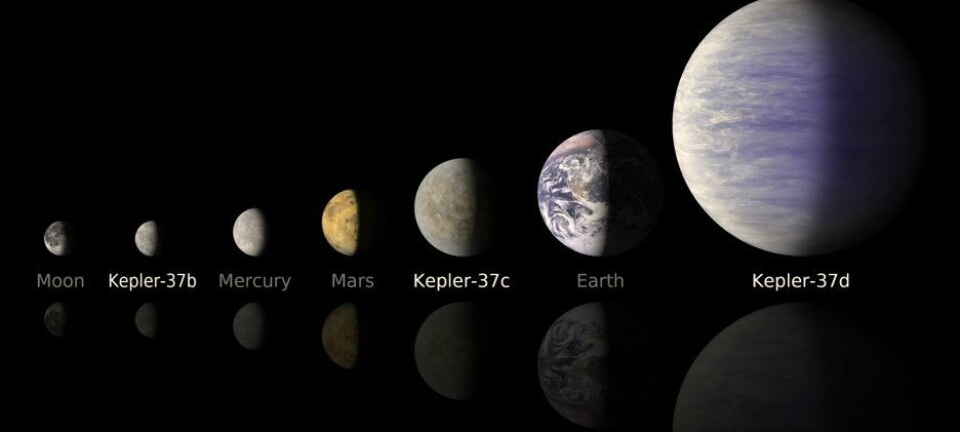
Physicists discover an "ozone layer" on distant exoplanet
The exoplanet WASP-121b has a stratosphere that absorbs radiation from the planet’s star.
It is not easy to study the atmosphere of a planet that circles around a star some million billion kilometres away.
But it is not impossible, and now a group of astrophysicists have discovered that one large exoplanet WASP-121b has an atmosphere comprised of a number of layers.
The new study identifies signs of a stratosphere on the planet says co-author Lars Buchhave, an associate professor from the Astrophysics and Planetary Science group at the Niels Bohr Institute, University of Copenhagen, Denmark.
“Normally, we think that the atmosphere becomes colder and colder the further away from the planet you go. But here we see that it actually becomes warmer at a certain point when you go higher up in the atmosphere,” he says.
“We can see such a temperature trend in the atmosphere on Earth and on other planets in the Solar System, but it’s the first time that we see it on an exoplanet,” says Buchhave.
The new results are published in the scientific journal Nature.
Boiling hot gas giant
WASP-121b is a gas giant, a so-called “hot Jupiter.” The planet is larger and heavier than Jupiter—the largest planet in the Solar System—and it orbits close to its star, resulting in a surface temperature of around 2,200 degrees Celsius.
Even though the star is about 880 light years away from Earth, its large size and proximity to its own star mean that its atmosphere can be studied with the Hubble and Spitzer telescopes.
The planet was discovered in 2015 using the WASP telescope in South Africa when astronomers observed it passing in front of its star.
Water vapour is boiling hot
The new details on the planet’s atmosphere come from a closer analysis of the star light.
Scientists compared the light from the star and the light that is both reflected and emitted by the planet, with the light from the star when the planet is on the other side it.
This allowed them to measure the temperature on the planet. They observed large amounts of water vapour in the atmosphere, which was boiling hot and emitted radiation in characteristic wavelengths.
Radiation from water vapour revealed that the temperature increases the higher up in the atmosphere you go.
An exciting type of planet
Simon Albrecht, an associate professor at the Department of Physics and Astronomy at Aarhus University, calls the results interesting.
“It’s a step towards being able to measure the physical conditions of the atmosphere of exoplanets. There were hints of a stratosphere on other ‘hot Jupiters,’ but recent observations have refuted the measurements. But it seems to be the case on WASP-121b,” says Albrecht, who also studies exoplanets.
“It’s exciting, because we don’t really know much about ‘hot Jupiters.’ We don’t have one like it in our own Solar System. We can learn something about how the atmosphere behaves under extreme conditions, where clouds of metal compounds form,” he says.
Hubble should measure more
The team behind the discovery are now studying other exoplanets to learn more about their atmospheres.
“These observations are a part of the large Hubble-program, where we systematically look at a range of exoplanets over a wide range of wavelengths,” says Buchhave.
“We will study exoplanets with various masses and at different distances to their stars to better understand what actually happens in their atmospheres,” he says.
--------------------------
Read more in the Danish version of this story on Videnskab.dk
Translated by: Catherine Jex










